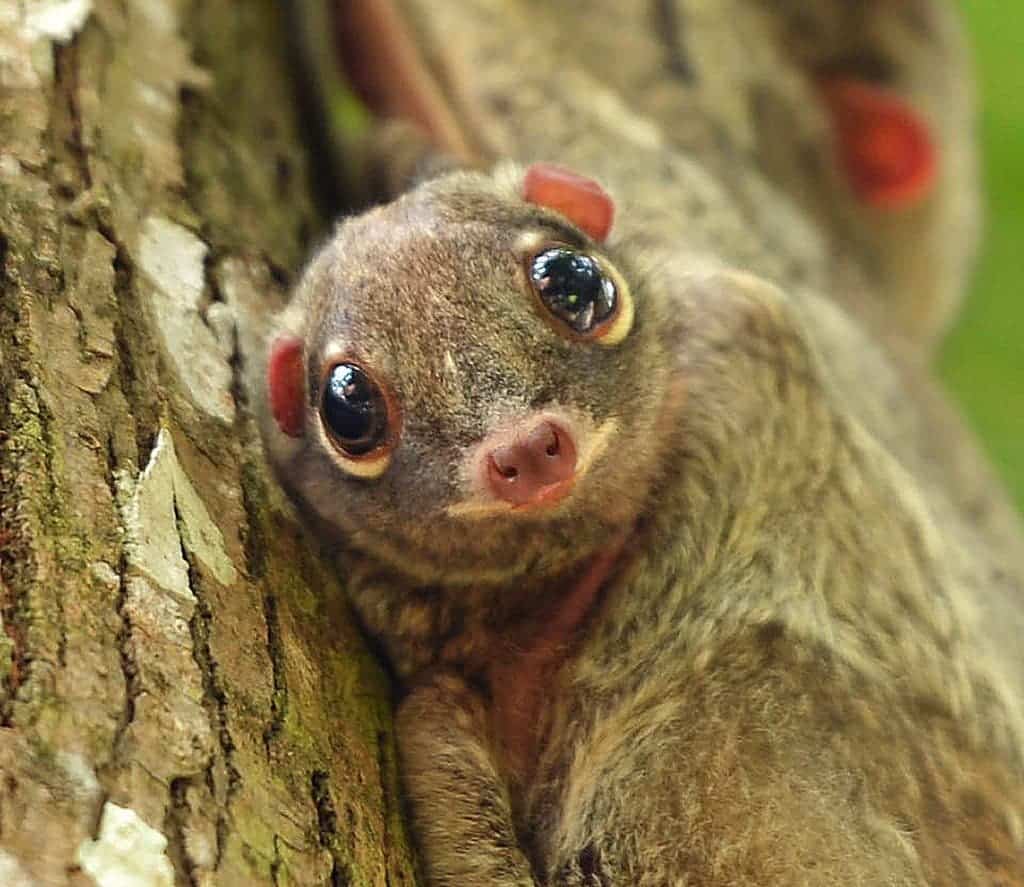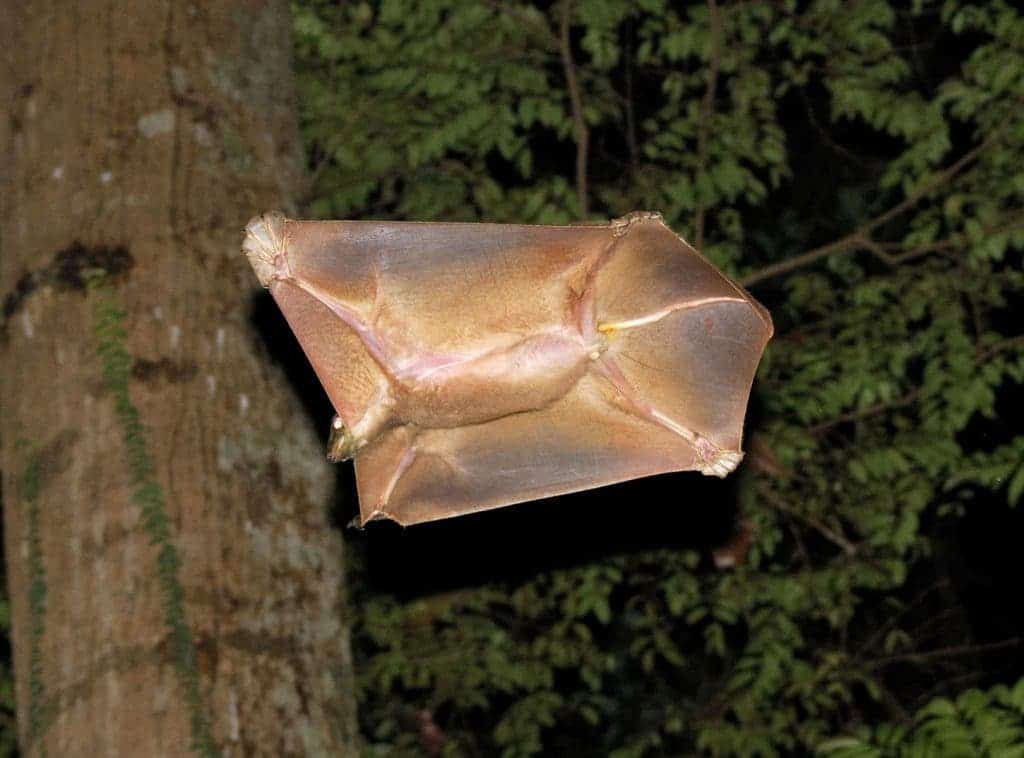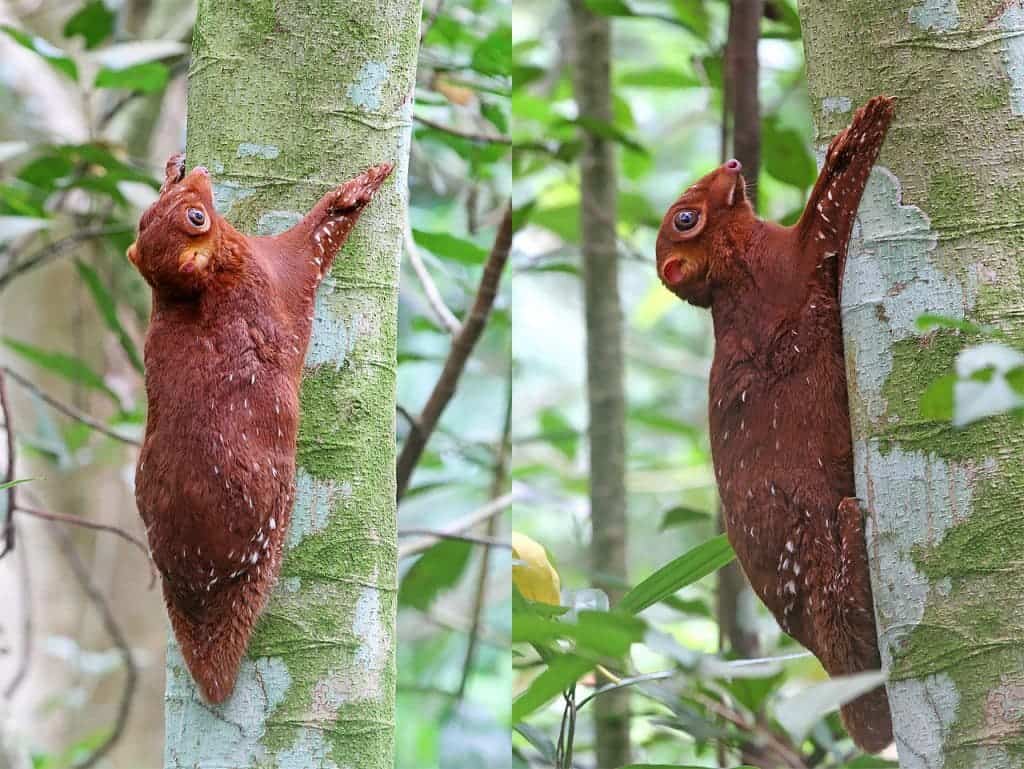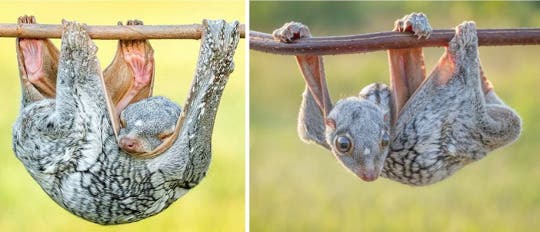It seems like us mammals were never meant to fly. Sure, bats can fly, but that’s kind of it. Even so, some mammals have learned alternative means of skipping at an altitude: gliding (feather-tailed possums, sifaka) or parachuting (cats). Yes, cats parachute, but enough of them. Chances have it you’ve seen on average 17 cats already since morning. Today’s post is about a gliding mammal that’s in much more need of attention: the adorable colugos.

A colugo baby. Image: Flickr
Also called a flying lemur, despite it’s not a lemur, nor can it fly. The colugo’s distinguishing hallmark is a gliding membrane (patagium) surrounding almost the entire body margin. This stretches from its face to the tips of its digits all the way back to its tail, even between fingers and toes (hence the name ‘mitten-gliders’). “Geometrically, it has the greatest surface area that you can have between those limbs without actually evolving an entire wing like bats did,” said conservation biologist Jan Janecka of Duquesne University.

The most accomplished mammalian glider. Photo: Norman Lim
This long patagium makes them fantastic gliders. They’re so good, that mums glide their fragile-boned young along from tree to tree. And as if their long cape wasn’t enough, the colugo has an unique set of dentures: the lower incisors are shaped like combs. Colugos are strict herbivores, predominantly eating young leaves from many tree species, and in the gastrointestinal tract the caecum is greatly enlarged.

Source: ImgKid
Two colugo species exist in the world, both confined to evergreen tropical rainforests of South-East Asia: Galeopterus variegatus (Malayan colugo, formerly known as Cynocephalus variegatus) and Cynocephalus volans (Philippine colugo). Elusive and shy, there’s little documentation pertaining to their habitat or way of life. Important genetic research, however, was carried out in the last couple of years. Apparently, classifying the animal is no easy feat. Previously, a sister-group relationship between colugos and primates seemed likely, but most recently researchers suggest colugos and tree-shrews constitute a monophyletic group. Such a group, labeled Sundatheria, was, for example, indicated by cladistic analysis of dental features, and several authors have reported molecular evidence linking colugos to tree-shrews.
Original Text (This is the original text for your reference.)
It seems like us mammals were never meant to fly. Sure, bats can fly, but that’s kind of it. Even so, some mammals have learned alternative means of skipping at an altitude: gliding (feather-tailed possums, sifaka) or parachuting (cats). Yes, cats parachute, but enough of them. Chances have it you’ve seen on average 17 cats already since morning. Today’s post is about a gliding mammal that’s in much more need of attention: the adorable colugos.

A colugo baby. Image: Flickr
Also called a flying lemur, despite it’s not a lemur, nor can it fly. The colugo’s distinguishing hallmark is a gliding membrane (patagium) surrounding almost the entire body margin. This stretches from its face to the tips of its digits all the way back to its tail, even between fingers and toes (hence the name ‘mitten-gliders’). “Geometrically, it has the greatest surface area that you can have between those limbs without actually evolving an entire wing like bats did,” said conservation biologist Jan Janecka of Duquesne University.

The most accomplished mammalian glider. Photo: Norman Lim
This long patagium makes them fantastic gliders. They’re so good, that mums glide their fragile-boned young along from tree to tree. And as if their long cape wasn’t enough, the colugo has an unique set of dentures: the lower incisors are shaped like combs. Colugos are strict herbivores, predominantly eating young leaves from many tree species, and in the gastrointestinal tract the caecum is greatly enlarged.

Source: ImgKid
Two colugo species exist in the world, both confined to evergreen tropical rainforests of South-East Asia: Galeopterus variegatus (Malayan colugo, formerly known as Cynocephalus variegatus) and Cynocephalus volans (Philippine colugo). Elusive and shy, there’s little documentation pertaining to their habitat or way of life. Important genetic research, however, was carried out in the last couple of years. Apparently, classifying the animal is no easy feat. Previously, a sister-group relationship between colugos and primates seemed likely, but most recently researchers suggest colugos and tree-shrews constitute a monophyletic group. Such a group, labeled Sundatheria, was, for example, indicated by cladistic analysis of dental features, and several authors have reported molecular evidence linking colugos to tree-shrews.









 User Center
User Center My Training Class
My Training Class Feedback
Feedback















Comments
Something to say?
Log in or Sign up for free